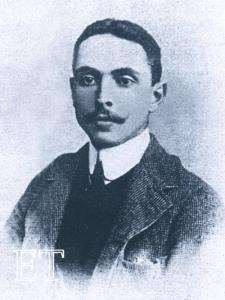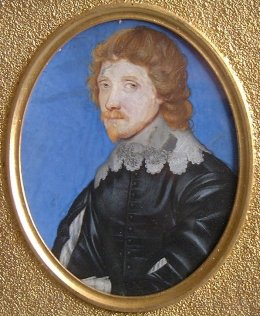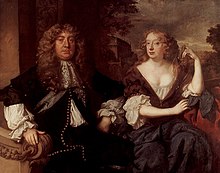
Fife is a council area, historic county, registration county and lieutenancy area of Scotland. It is situated between the Firth of Tay and the Firth of Forth, with inland boundaries with Perth and Kinross and Clackmannanshire. By custom it is widely held to have been one of the major Pictish kingdoms, known as Fib, and is still commonly known as the Kingdom of Fife within Scotland. A person from Fife is known as a Fifer. In older documents the county was very occasionally known by the anglicisation Fifeshire.

Earl of Rothes is a title in the Peerage of Scotland. It was created in 1458 for George Leslie, 1st Lord Leslie. He had already been created Lord Leslie in 1445, also in the Peerage of Scotland. His grandson, the third Earl, having only succeeded his elder brother in March 1513, was killed at the Battle of Flodden on 9 September of the same year. His son, the fourth Earl, served as an Extraordinary Lord of Session. Lord Rothes was also tried for the murder of Cardinal Beaton but was acquitted.

Glenrothes is a town situated in the heart of Fife, in east-central Scotland. It is about 30 miles (48 km) north of Edinburgh and 30 miles (48 km) south of Dundee. The town had a population of 39,277 in the 2011 census, making it the third largest settlement in Fife and the 18th most populous settlement in Scotland. The name Glenrothes comes from its historical link with the Earl of Rothes, who owned much of the land on which the new town has been built; Glen was added to the name to avoid confusion with Rothes in Moray and in recognition that the town lies in a river valley. The motto of Glenrothes is Ex terra vis, meaning "From the earth strength", which dates back to the founding of the town.

Rothes is a town in Moray, Scotland, on the banks of the River Spey, 10 miles (16 km) south of Elgin. The town had a population of 1,252 at the 2011 Census. A settlement has been here since AD 600.

John Hamilton-Leslie, 9th Earl of Rothes (1679–1722) was a Scottish nobleman who fought on the side of George I during the Jacobite rising of 1715.

John Leslie, son of John Leslie, 6th Earl of Rothes, was the 7th Earl of Rothes and 1st Duke of Rothes. According to tradition, he was a descendant of Princess Beatrix, sister of King Malcolm III of Scotland. His family had intermarried with both the Stuarts and the Bruces.

Norman Evelyn Leslie, 19th Earl of Rothes was a Scottish soldier and representative peer.

Lucy Noël Martha Leslie, Countess of Rothes was a British philanthropist and social leader. She was seen as a heroine of the Titanic disaster, famous for taking the tiller of her lifeboat and later helping row the craft to the safety of the rescue ship Carpathia. The countess was for many years a popular figure in London society, known for her blonde beauty, bright personality, graceful dancing and the diligence with which she helped organise lavish entertainments patronised by English royalty and members of the nobility. She was long involved in charity work throughout the U.K., most notably assisting the Red Cross with fundraising and as a nurse for the Coulter Hospital in London during World War I. Lady Rothes was also a leading benefactor of the Queen Victoria School and The Chelsea Hospital for Women, known today as Queen Charlotte's and Chelsea Hospital.

Dundee HSFP is a former rugby union team that played their home games at the Mayfield Playing Fields, Dundee, Scotland. The club disbanded in 2021.

Sir William Bruce of Kinross, 1st Baronet, was a Scottish gentleman-architect, "the effective founder of classical architecture in Scotland," as Howard Colvin observes. As a key figure in introducing the Palladian style into Scotland, he has been compared to the pioneering English architects Inigo Jones and Christopher Wren, and to the contemporaneous introducers of French style in English domestic architecture, Hugh May and Sir Roger Pratt.
Alexander Leslie, Earl of Ross was a Scottish nobleman. Born between 1367 and 1382, he was the son of Walter Leslie, Lord of Ross and Euphemia I, Countess of Ross. In around 1394 he became Earl of Ross and sometime before 1398 he married Isabel Stewart, daughter of Robert Stewart, Duke of Albany. They had one child, Euphemia. He died at Dingwall, Scotland on 8 May 1402.

Leslie is a large village and parish on the northern tip of the River Leven Valley, to the west of Glenrothes in Fife. According to the population estimates (2006), the village has a population of 3,092. The village was granted burgh of barony status by James II in 1458 for George Leslie who became the first Earl of Rothes. Later, this was upgraded to a police burgh in 1865.

John Leslie, 6th Earl of Rothes was a Scottish nobleman, one of the main leaders of the Covenanters.

Robert Mylne was a Scottish stonemason and architect. A descendant of the Mylne family of masons and builders, Robert was the last Master Mason to the Crown of Scotland, a post he held from 1668 until his death.

Malcolm George Dyer-Edwardes Leslie, 20th Earl of Rothes was a Scottish nobleman, and the head of Clan Leslie. He was the Earl of Rothes from 1927 until 1975, following the death of his father, Norman Leslie, 19th Earl of Rothes.

Strathtyrum is a 400-acre (160 ha) country estate in the north-western outskirts of St Andrews, Fife, Scotland. It is accessed via the A91.

Riverside Park is a town park situated in the town of Glenrothes, Fife. The park has pleasant woodland walks, floral gardens, a pond and recently an Arboretum has been planted. The park has several play areas and town art sculptures, adventure play areas, seasonal toilets and fitness equipment. It also features a few statues and objects from Boblingen, Germany, the twin town of Glenrothes.

Marie Stewart, Countess of Mar (1576-1644) was a Scottish courtier. She was the daughter of Esmé Stewart, 1st Duke of Lennox, a favourite of James VI of Scotland, and Catherine de Balsac. After her marriage, as was customary in Scotland, she did not change her name, and signed her letters as "Marie Stuart".
David Seton of Parbroath was a Scottish courtier and administrator.




















